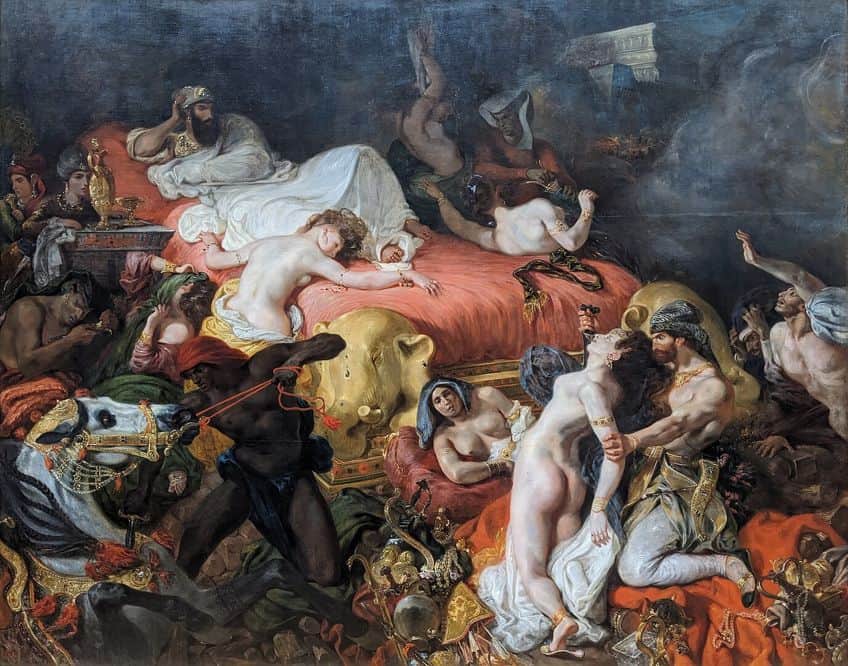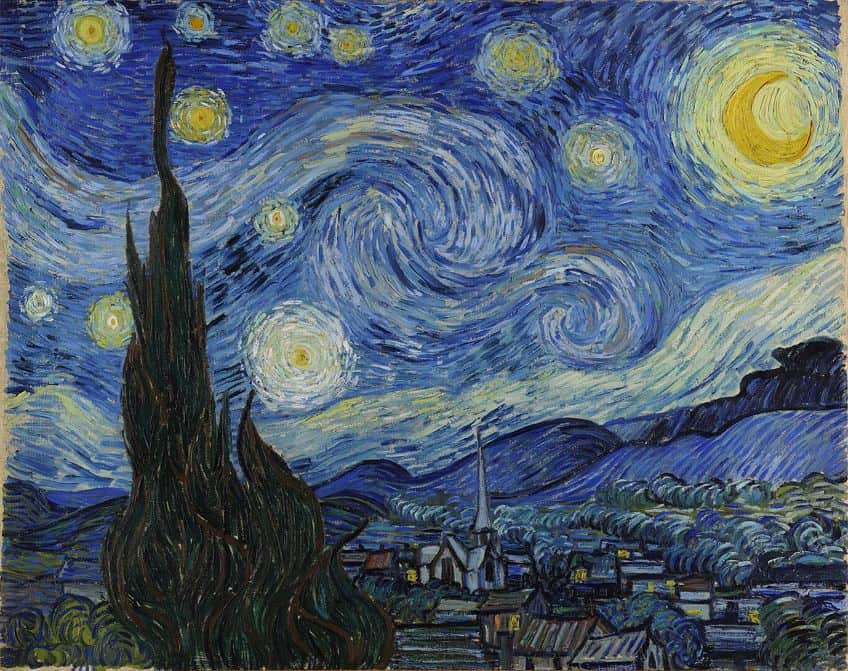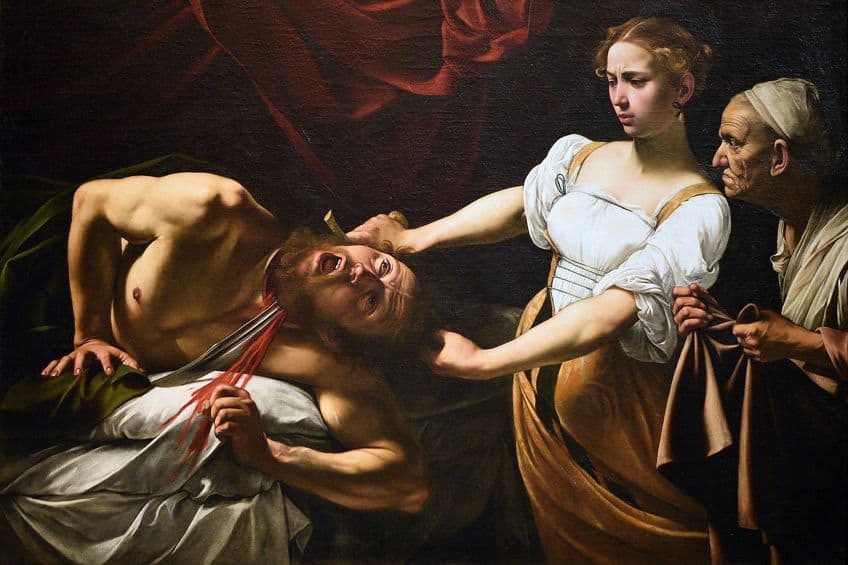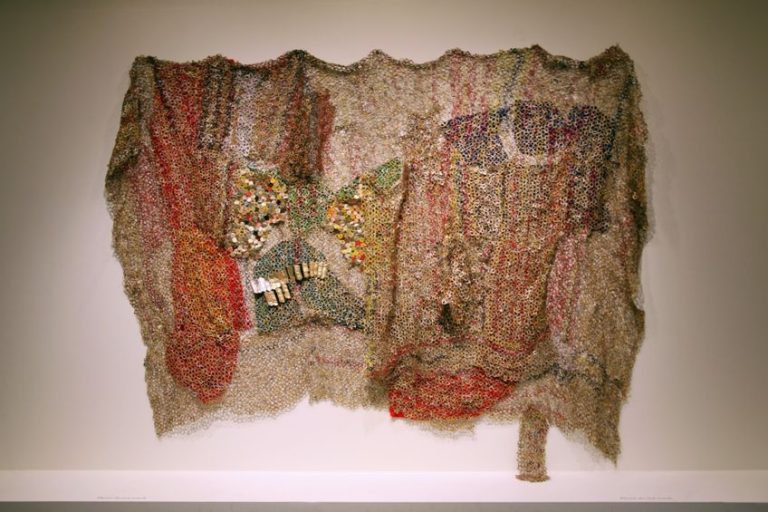Composition in Art – Techniques for Creating Balanced Scenes
Artistic composition is the cornerstone of visual art, serving as the unseen architect that guides the viewer’s experience. “What is composition in art?” is a question that echoes through the annals of artistic exploration, as it delves into the very essence of how artists arrange elements within their works. Understanding the role of composition is pivotal to deciphering the intentions and impact of art. In this article, we will unravel the intricacies of artistic composition, explore the most common purpose it serves in art, and draw on notable examples of composition in art.
What Is Composition in Art?
Art, in all its forms, is an expressive language that communicates thoughts, emotions, and ideas. At the heart of visual art, be it in painting, photography, or design, lies the concept of composition. But what exactly is composition in art, and why does it matter so much?

The Cornerstone of Art: Composition Defined
Composition is the very bedrock upon which the structure of artistry stands. It is the quiet conductor that orchestrates the visual symphony within an artwork. At its core, composition involves the conscious placement and manipulation of an array of artistic elements, transforming the canvas into a stage where colors, shapes, lines, and textures take center stage. The interaction of these elements is akin to a delicate dance, a choreography of visual components that dictates how the artwork will communicate and resonate with its audience. In essence, composition serves as the language of art, whispering or shouting emotions, stories, and ideas to those who engage with the masterpiece.
It can be likened to a silent poet, using the canvas as a canvas for expression and the viewer as a willing audience, ready to decipher the enigmatic script of the visual world.
The choice of elements within a composition is the artist’s palette, and the arrangement is the brushstroke, and through this process, art is birthed. Whether it’s the use of warm, vibrant colors to invoke passion or the interplay of geometric shapes to convey order or chaos, the composition is the brush in the artist’s hand, the sculptor’s chisel, and the photographer’s lens, allowing for the creation of compelling narratives, engaging aesthetics, and thought-provoking aesthetics.
What Is the Most Common Purpose for Composition in Art?
To appreciate the full spectrum of composition’s significance in art, it is imperative to delve into its multifaceted role. The essence of composition extends far beyond the superficial arrangement of elements; it is an art form within the art form, playing a crucial role in shaping the viewer’s encounter with a work of art. Here, we explore its intricate functions and how it breathes life into the creative process.

Guiding the Viewer’s Eye: The Artistic Roadmap
Composition, in its most fundamental role, operates as an artistic roadmap. It serves as an unspoken guide that choreographs the viewer’s journey across the canvas. By strategically positioning elements, artists direct the observer’s gaze toward key focal points within the artwork. This deliberate control of visual flow is akin to a conductor directing an orchestra, ensuring that the viewer’s attention aligns with the artist’s narrative intentions.
Whether it’s leading the eye to a subject’s gaze, a hidden detail, or a pivotal moment, the composition becomes the compass that navigates the viewer through the visual narrative, transforming passive observation into an engaging exploration.
Creating Balance and Harmony: The Equilibrium of Art
Balance and harmony are the yin and yang of composition. They are the delicate equilibrium sought by artists to infuse their works with stability and coherence. Composition allows artists to achieve this sense of equilibrium, whether it be through symmetrical precision or asymmetrical tension. Symmetry imparts a sense of order and tranquility, where components are mirror images of each other. On the other hand, asymmetry introduces a dynamic tension that keeps the viewer engaged, almost like a well-composed piece of music with its ebbs and flows. It’s the meticulous orchestration of elements that offers artists the power to create the visual rhythm that resonates with their intent, their emotional message, and their narrative.

Conveying Meaning and Emotion: The Language of Visuals
Perhaps one of the most profound facets of composition is its ability to speak in the language of emotion. Through careful arrangement, artists can convey a multitude of feelings, moods, and ideas. A composition teeming with chaos, disorder, and erratic elements can evoke a sense of turmoil, echoing the artist’s inner turmoil or the theme they wish to express. Conversely, a serene, orderly arrangement can impart a feeling of calm and tranquility, inviting the viewer into a meditative or reflective state.
Composition is, in essence, the palette of an artist’s emotions, translating abstract sentiments into tangible visual cues, and enabling viewers to connect with the underlying themes on a visceral level.
Enhancing Visual Impact: The Difference Between Memorable and Forgettable
In the grand gallery of art, not all pieces command equal attention. This is where the enchantment of composition truly shines. A well-composed artwork has the innate ability to captivate the viewer’s attention. It transforms a mere moment of observation into an enduring memory. The judicious arrangement of elements, colors, and textures elevates an artwork from being easily forgotten to etching itself into the viewer’s memory. It can be the nuance that separates an artwork from the ordinary, resonating long after the observer has moved on. In essence, composition is the difference between a fleeting glance and a lingering gaze, between an artwork that whispers and one that shouts its presence in the realm of artistry.

The Most Common Purpose for Composition in Art
One of the most common purposes of composition in art is to lead the viewer’s eye to the focal point of the artwork. This is often achieved through techniques such as the rule of thirds, which divides the canvas into a grid, with the most important elements placed at the intersections of these lines.
Additionally, the use of contrast in color, shape, or size can draw the viewer’s attention to specific areas within the composition.
The Evolution of Artistic Composition: A Journey Through Art History
Art, as a visual language, has been continually shaped and reshaped throughout history. One of the core elements that has evolved significantly over time is artistic composition. From the classical works of ancient Greece to the dynamic and boundary-pushing contemporary art scene, composition has played a pivotal role in how artists convey meaning and aesthetics. In this section of the article, we embark on a journey through the annals of art history, tracing the transformation of composition from classical art to the contemporary moment in the art world.

Classical Art: The Foundations of Composition
In classical art, the principles of composition were deeply rooted in the pursuit of visual perfection and idealized beauty. Artists of the ancient Greek and Roman civilizations aimed to emulate the divine and the harmonious in their works. The meticulous geometric arrangements of elements were not merely technical choices; they were a reflection of the belief that beauty and harmony in art could mirror the order and balance of the cosmos. The Doryphoros (440 BC) by Polykleitos (480 BC-420 BC), with its balanced proportions and meticulous attention to anatomical detail, exemplifies the classical pursuit of idealized form. Similarly, the frescoes of Pompeii showcase the use of symmetry, perspective, and balance to create harmonious visual narratives that celebrate the aesthetics of the era.
Classical art’s enduring influence on composition can be seen as the foundation upon which subsequent artistic movements have built, shaping the language of visual art across the ages.
The Renaissance: The Emergence of Perspective
The Renaissance’s embrace of linear perspective and mathematical principles ushered in a new era of artistic representation. This transformation allowed artists to move beyond the two-dimensional constraints of classical art, giving rise to compositions that conveyed a profound sense of depth and realism. Leonardo da Vinci’s (1452-1519) Mona Lisa (1503) is a prime example of this Renaissance innovation. The use of linear perspective in the background landscapes, combined with Leonardo’s meticulous attention to details like sfumato and chiaroscuro, led to a painting that felt not merely like a depiction but a living presence. The subtle application of the golden ratio in the composition created a harmonious balance that resonated with the natural world and the human form. The Renaissance’s exploration of perspective laid the groundwork for coming eras of creatives to investigate the infinite options of composition and realism in art.

Baroque Art: Drama and Movement
Baroque art, with its emphasis on dramatic lighting, dynamic compositions, and heightened emotional intensity, marked a significant shift in artistic expression. The compositions of this era conveyed the tumultuous nature of the time, where grandeur and opulence met with intense human emotions. In Judith Beheading Holofernes (1598-1599), Caravaggio’s (1571-1610) masterful handling of chiaroscuro and the use of diagonals in the composition imbued the scene with a visceral sense of drama and tension. The viewer’s eye is unambiguously drawn to the focal point—the gruesome beheading—a moment charged with raw emotion and suspense.
The Baroque period, in its embrace of theatricality and emotional fervor, exemplifies how composition became a vehicle for evoking powerful emotional responses, setting the stage for future movements that explored the inner depths of the human psyche through art.
Neoclassicism: A Return to Antiquity
In the Neoclassical movement, there was a deliberate shift away from the Baroque’s emotional intensity and drama. Artists of this era, such as Jacques-Louis David (1748-1825), harked back to the rational and ordered aesthetics of ancient Greece and Rome. In The Death of Sardanapalus (1827) by Eugène Delacroix (1798-1863), the composition adheres to the principles of classical clarity, symmetry, and restraint. The structured arrangement of elements in Neoclassical works conveyed a sense of moral and intellectual gravitas, often centered around heroic or historic narratives. This return to antiquity through composition served as a visual and philosophical bridge connecting the art of the past with the intellectual ideals of the Enlightenment, highlighting how the composition could be used to communicate not just aesthetic values but also profound ideas and cultural perspectives.

Romanticism: Emotion and Individual Expression
In the Romantic period, artistic composition became a vehicle for the celebration of individualism, emotion, and a deep connection with nature. Artists like J.M.W. Turner (1775-1851) and Eugène Delacroix broke free from the constraints of rigid classical compositions. Their works embraced the turbulence of emotions and the grandeur of nature. Turner’s sweeping landscapes and seascapes used composition to convey the raw, untamed power of the natural world, while Delacroix’s Liberty Leading the People (1830) was a potent example of how composition could capture the fervor of revolutionary ideals.
In this emotionally charged style, composition was not merely a tool but a means of giving voice to personal and societal passions, marking a profound shift in the role of art and its ability to convey the innermost experiences of the artist and their era.
Impressionism: Capturing the Moment
In the Impressionist movement, composition underwent a radical transformation. Artists such as Claude Monet (1840-1926) and Pierre-Auguste Renoir (1841-1919) were no longer bound by the meticulous detail and precision of earlier styles. Instead, they sought to capture the ephemeral, the transient, and the play of light and color in their compositions. The focus shifted from meticulous representation to the portrayal of atmosphere and sensation. Monet’s Water Lilies (1897–1899) series is a quintessential example of this approach. Through loose brushwork and a vivid color palette, Monet’s compositions transport viewers to the tranquil, sun-dappled world of his garden, encouraging them to engage with the scene on a personal and immediate level. Impressionism revolutionized composition by embracing the beauty of the fleeting moment, allowing art to mirror the ever-changing tapestry of life.

Cubism: Deconstructing and Reconstructing
Cubism, led by the pioneering efforts of Pablo Picasso (1881-1973) and Georges Braque (1882-1963) was a groundbreaking movement that reshaped the very essence of composition in art. It was a revolutionary deconstruction and reconstruction of forms and objects, transcending traditional representations. Cubist artists fragmented their subjects into geometric shapes and presented them from multiple viewpoints simultaneously. This approach resulted in compositions that appeared almost like a mosaic of the visual world, demanding viewers to engage with the artwork in a new, intellectual way. Picasso’s Les Demoiselles d’Avignon (1907) remains an iconic example of this innovative approach, where composition served as a means to challenge preconceived notions and invite audiences to explore the multidimensional complexity of the world as interpreted through the artist’s unique lens.
Cubism expanded the boundaries of composition, introducing a new language of abstraction and perspective that would influence art for generations to come.
Abstract Expressionism: Gestural Freedom
Abstract Expressionism, a prominent movement of the mid-20th century, was a celebration of artistic freedom and emotional expression. Artists like Jackson Pollock (1912-1956) and Willem de Kooning (1904-1997) embraced a form of composition that was intuitive and spontaneous. Their works were characterized by bold brushwork, drips, and dynamic movements that conveyed raw emotion and energy. These compositions invited onlookers to become active participants, encouraging them to analyze and connect with the artwork on a bodily level. Abstract Expressionism, therefore, was not just a departure from traditional composition but a profound shift in the role of art, where composition was a direct channel for the artist’s innermost feelings and a bridge for viewers to engage with those emotions on a deeply personal level.

Pop Art: Repetition and Mass Culture
Pop Art, a significant movement in the mid-20th century, sought to blur the lines between high and low culture, celebrating the every day and the familiar. Artists like Andy Warhol (1928-1987) and Roy Lichtenstein (1923-1997) brought elements of mass culture directly into the realm of art. The compositions in Pop Art often showcased repetitive imagery, bold and vibrant colors, and a focus on consumer culture. Warhol’s iconic Campbell’s Soup Cans (1962) is a quintessential example of this style, where everyday products were elevated to the status of fine art. Through composition, Pop Art encouraged viewers to reconsider the ubiquitous and the mundane, prompting a reevaluation of the impact of mass culture on our daily lives.
This movement highlighted how composition could be a powerful tool for exploring societal values, consumerism, and the boundaries of traditional art while maintaining a sense of playfulness and accessibility.
Contemporary Art: Diversity and Conceptual Exploration
In the vibrant landscape of contemporary art, diversity reigns supreme, and composition is a playground of endless possibilities. Artists today, such as Ai Weiwei (1957-Present) and Yayoi Kusama (1929-Present), defy categorization by exploring a vast array of styles, materials, and techniques. Composition is no longer restricted by the conventions of the past; it is a means for artists to communicate complex ideas, provoke social commentary, and convey personal experiences. The digital age has ushered in a new frontier in composition, with interactive and multimedia artworks pushing the boundaries of how we engage with art. This evolving artistic landscape reveals how composition remains at the heart of creative expression, offering artists a boundless realm for conceptual exploration and experimentation in a rapidly changing world.
Examples of Composition in Art
To truly appreciate the depth and diversity of composition in art, let’s delve into a selection of remarkable artworks that showcase its myriad expressions. These artwork examples underscore the immense diversity and power of composition in the world of art, demonstrating that it is not just a technical aspect but a dynamic language through which artists communicate and captivate their audiences.

Mona Lisa (1503) by Leonardo da Vinci
| Artist | Leonardo da Vinci (1452 – 1519) |
| Date | 1503 |
| Medium | Oil on wood |
| Dimensions (cm) | 77 x 53 |
| Current Location | Louvre Museum, Paris, France |
Undoubtedly one of the most famous artworks in the world, the Mona Lisa epitomizes the art of composition. Leonardo da Vinci masterfully guides the viewer’s gaze to the captivating enigma of the subject’s smile. The composition is a meticulously orchestrated symphony of visual elements. The serene landscape background, subtly transitioning from light to shadow, complements her posture and the use of sfumato, a technique that blurs edges and softens transitions. Together, these elements create a composition that captivates the viewer, holding their attention on the Mona Lisa’s beguiling countenance.
It’s a prime example of how composition can emphasize the central focal point in a painting and draw the viewer into its mysterious depths.

Starry Night (1889) by Vincent van Gogh
| Artist | Vincent van Gogh (1853 – 1890) |
| Date | 1889 |
| Medium | Oil on canvas |
| Dimensions (cm) | 74 x 92 |
| Current Location | The Museum of Modern Art, New York City, United States |
Starry Night by Vincent van Gogh is an emotional tour de force, with composition playing a central role in conveying the artist’s turbulent state of mind. The swirling, almost chaotic composition mirrors the artist’s inner turmoil and emotional intensity. The dynamic lines and vibrant colors create a sense of restlessness and unease, perfectly reflecting van Gogh’s struggles with mental health. The composition itself becomes a visual representation of the artist’s psyche, inviting observers to engage with the painting on a deeply emotional level.
It serves as a testament to how composition can be a vehicle for conveying the artist’s internal world, giving viewers a glimpse into the emotional landscape that inspired the masterpiece.

Moonrise, Hernandez, New Mexico (1941) by Ansel Adams
| Artist | Ansel Adams (1902 – 1984) |
| Date | 1941 |
| Medium | Black-and-white photograph, gelatin silver print |
| Dimensions (cm) | 34.9 × 44 |
| Current Location | The Museum of Modern Art, New York City, United States |
In the realm of photography, Ansel Adams was a master of composition, as exemplified in Moonrise, Hernandez, New Mexico. This photograph is a spectacular illustration of how composition can emphasize the vastness and grandeur of a landscape. Adams’ composition meticulously orchestrates the interplay of light and shadow, leading the viewer’s eye toward the ethereal moon in the distance. The distinction between the bright moon and the darkened foreground creates a sense of awe and wonder.
Composition, in this context, becomes a tool for inviting viewers to explore the enormity and mystique of the natural world, underscoring the power of landscape photography to convey both the sublime and the transcendent.
Composition with Red, Blue, and Yellow (1930) by Piet Mondrian
| Artist | Piet Mondrian (1872 – 1944) |
| Date | 1930 |
| Medium | Oil on canvas |
| Dimensions (cm) | 45 × 45 |
| Current Location | Kunsthaus Zürich, Zürich, Switzerland |
Piet Mondrian’s abstract masterpiece, Composition with Red, Blue, and Yellow, is a testament to the artist’s exploration of balance and harmony through composition. Within the realm of abstraction, Mondrian uses primary colors and geometric shapes with meticulous precision. His composition is a study in equilibrium, where the placement of these elements creates a sense of visual balance that is both striking and intellectually stimulating. The grid-like structure and the careful distribution of color not only guide the viewer’s eye but also invite contemplation on the relationship between art and order. Mondrian’s composition challenges viewers to explore the boundaries of abstraction and the language of geometry, highlighting how composition can be a vehicle for intellectual engagement and aesthetic pleasure.

In the realm of art, artistic composition stands as the mute instructor, guiding the viewer through the intricate tapestry of visual language. What is the most common purpose for composition in art? The answer is clear: it serves as a powerful means to lead the viewer’s eye, emphasize focal points, and create harmony. The examples of composition in art, from Leonardo da Vinci’s Mona Lisa to Vincent van Gogh’s Starry Night, reveal the incredible range and depth of this essential element. Ultimately, composition is the underlying structure that breathes life into visual art, shaping our experience, and enabling artists to communicate, provoke emotion, and inspire. It is the cornerstone upon which art’s timeless dialogues with the human spirit are constructed, transcending time and culture, and enriching the world of creativity.
Frequently Asked Questions
What Is Composition in Art?
Composition in art refers to the deliberate placement of visual parts within an artwork. These elements can include colors, shapes, lines, textures, and various other visual components. It is the foundation that guides the viewer’s experience, directing their gaze, creating balance and harmony, conveying meaning and emotion, and ultimately enhancing the visual impact of the artwork. Composition is the language of art, enabling artists to communicate, express their intentions, and engage viewers on both emotional and intellectual levels. It shapes the narrative and aesthetics, making it a fundamental and integral aspect of the artistic process.
What Is the Most Common Purpose for Composition in Art?
The most typical intention for composition in art is to guide the viewer’s eye and emphasize a central focal point within the artwork. Through carefully arranged visual elements, artists direct the viewer’s attention, creating a visual hierarchy that ensures the most critical aspects of the piece are noticed and appreciated. This deliberate arrangement helps convey the artist’s message, story, or intended emotional impact, enhancing the overall coherence and impact of the artwork.
What Are Examples of Composition in Art?
In exploring the diverse examples of composition in art, we have unveiled the rich tapestry of creativity that this essential element weaves within the world of visual expression. From the meticulous symmetries of classical masterpieces to the emotional tumult of Van Gogh’s Starry Night (1889), from Ansel Adams’ serene landscapes to Piet Mondrian’s geometric precision, we witness how composition serves as the visual language that artists wield to captivate, provoke, and communicate. These examples illuminate the dynamic interplay of form and emotion, guiding our gaze, evoking feelings, and shaping our understanding.
Nicolene Burger is a South African multi-media artist, working primarily in oil paint and performance art. She received her BA (Visual Arts) from Stellenbosch University in 2017. In 2018, Burger showed in Masan, South Korea as part of the Rhizome Artist Residency. She was selected to take part in the 2019 ICA Live Art Workshop, receiving training from art experts all around the world. In 2019 Burger opened her first solo exhibition of paintings titled, Painted Mantras, at GUS Gallery and facilitated a group collaboration project titled, Take Flight, selected to be part of Infecting the City Live Art Festival. At the moment, Nicolene is completing a practice-based master’s degree in Theatre and Performance at the University of Cape Town.
In 2020, Nicolene created a series of ZOOM performances with Lumkile Mzayiya called, Evoked?. These performances led her to create exclusive performances from her home in 2021 to accommodate the mid-pandemic audience. She also started focusing more on the sustainability of creative practices in the last 3 years and now offers creative coaching sessions to artists of all kinds. By sharing what she has learned from a 10-year practice, Burger hopes to relay more directly the sense of vulnerability with which she makes art and the core belief to her practice: Art is an immensely important and powerful bridge of communication that can offer understanding, healing and connection.
Nicolene writes our blog posts on art history with an emphasis on renowned artists and contemporary art. She also writes in the field of art industry. Her extensive artistic background and her studies in Fine and Studio Arts contribute to her expertise in the field.
Learn more about Nicolene Burger and the Art in Context Team.
Cite this Article
Nicolene, Burger, “Composition in Art – Techniques for Creating Balanced Scenes.” Art in Context. January 8, 2024. URL: https://artincontext.org/composition-in-art/
Burger, N. (2024, 8 January). Composition in Art – Techniques for Creating Balanced Scenes. Art in Context. https://artincontext.org/composition-in-art/
Burger, Nicolene. “Composition in Art – Techniques for Creating Balanced Scenes.” Art in Context, January 8, 2024. https://artincontext.org/composition-in-art/.










